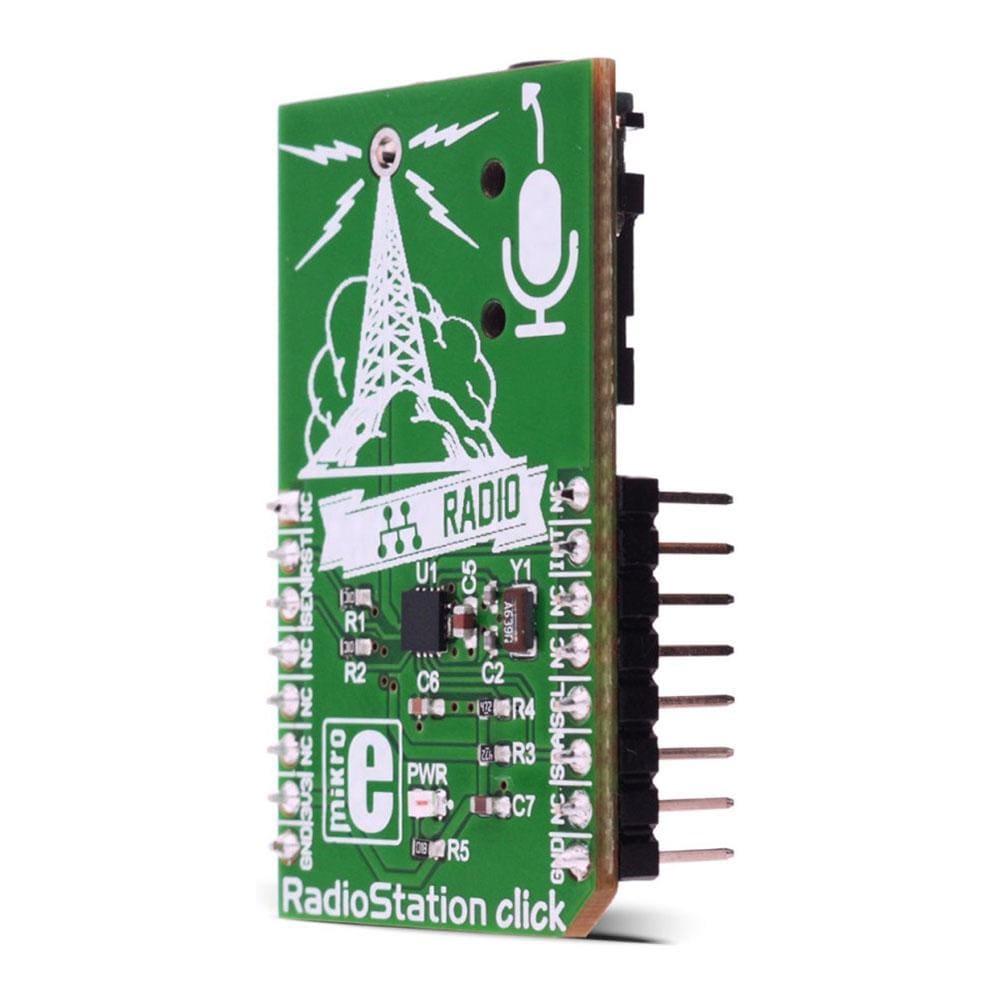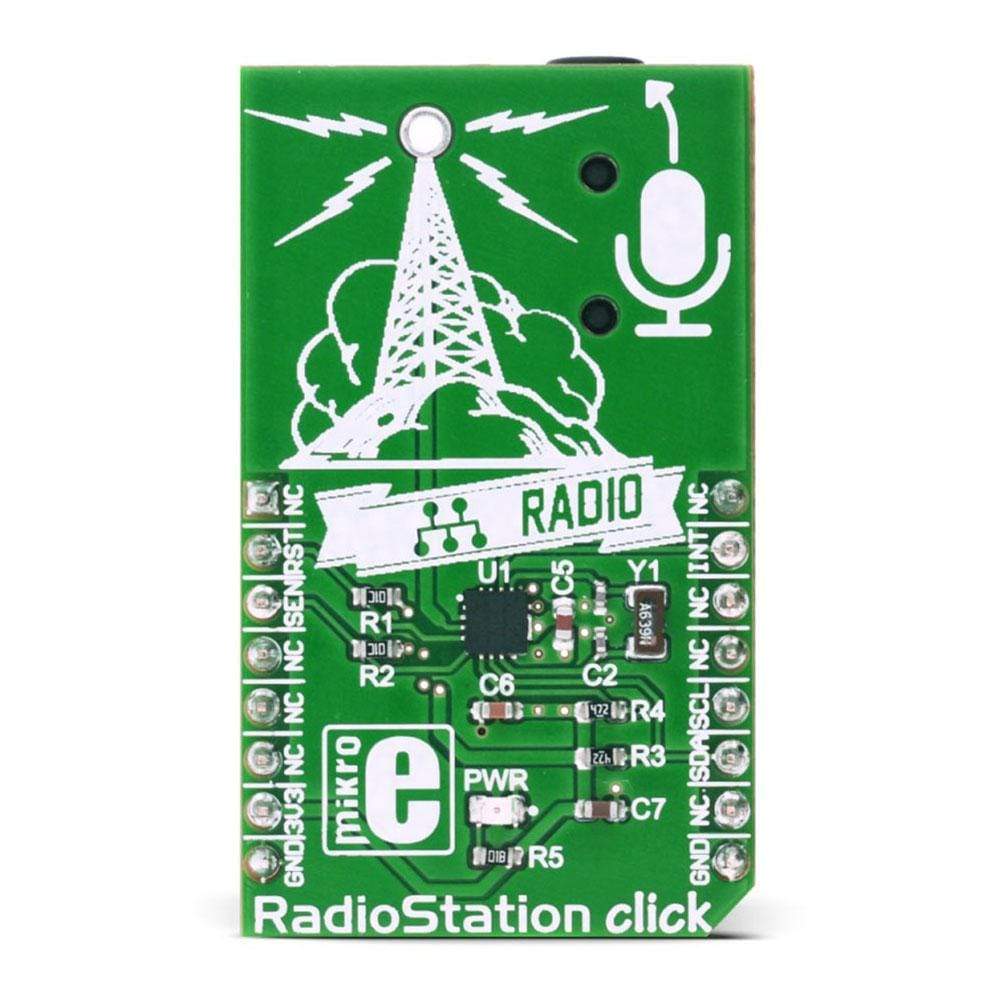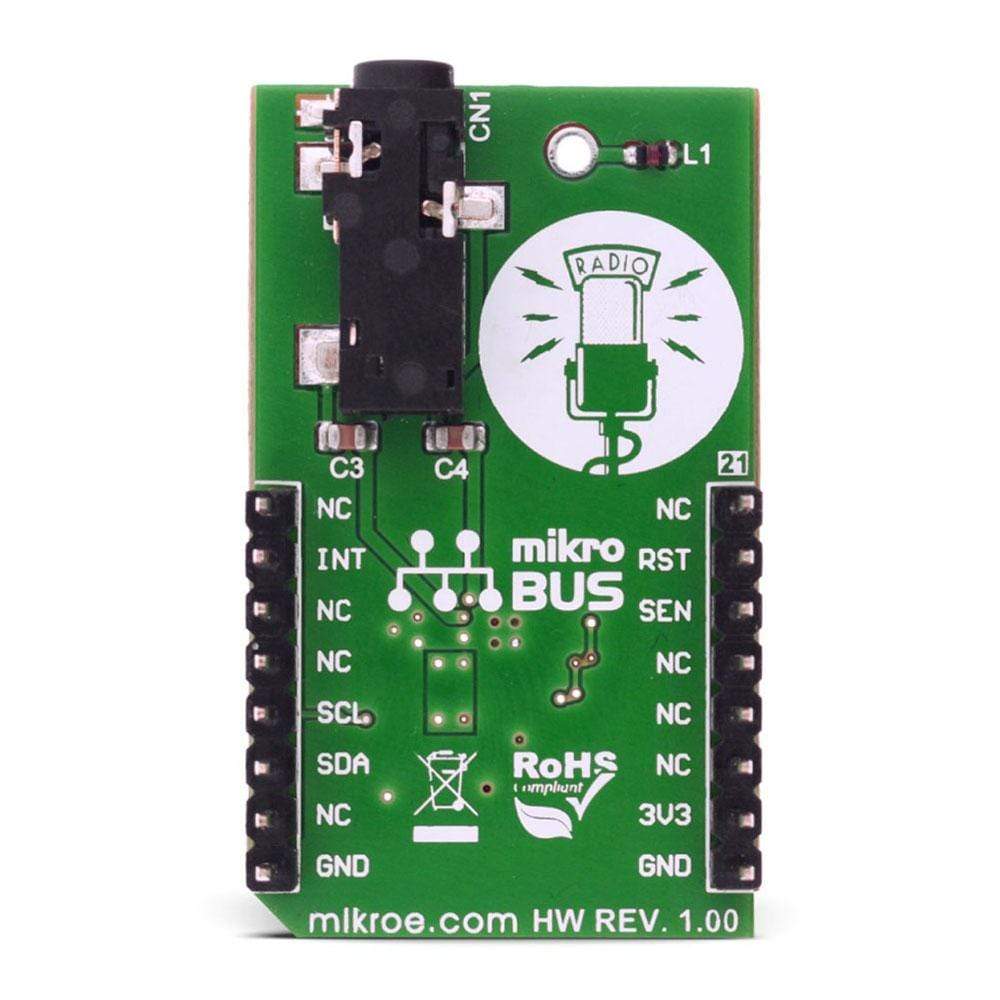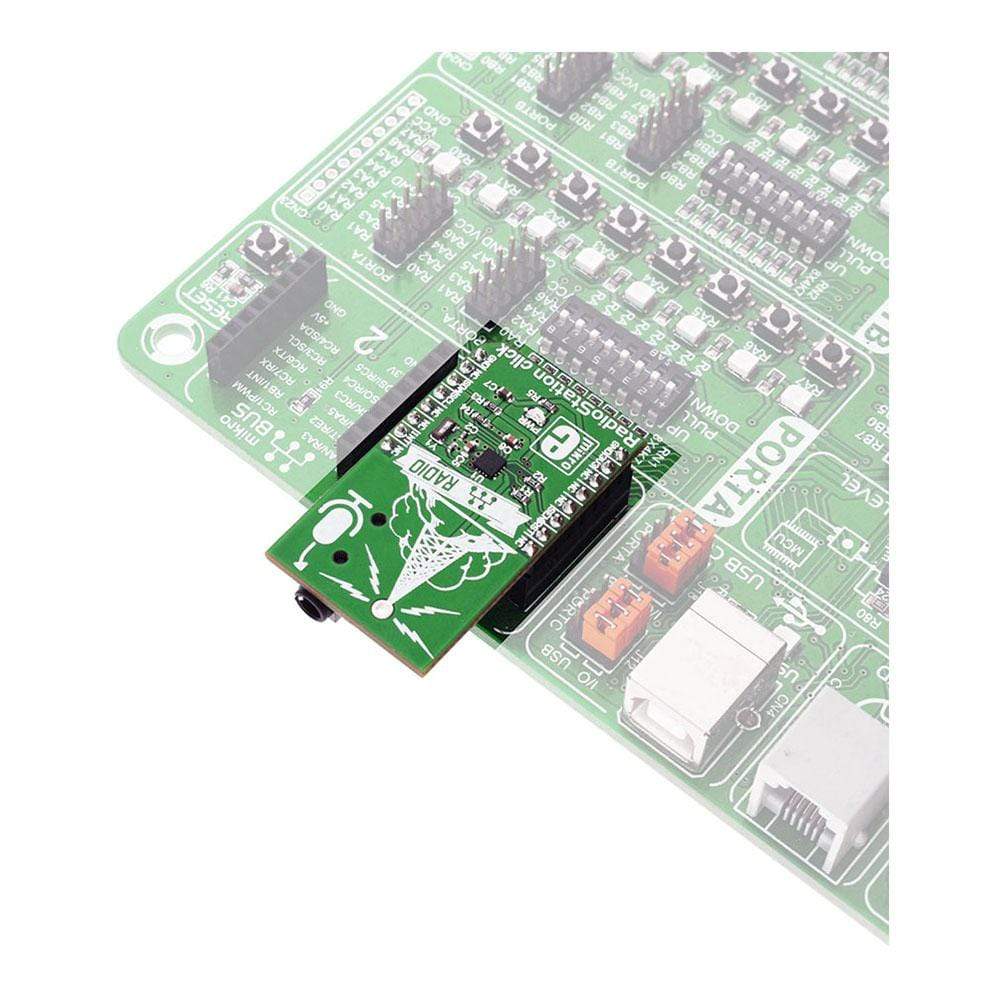



Overview
The RadioStation Click Board™ is a unique Click Board™ that can be used to broadcast the music via the FM radio band. It features the Si4713-B30 from Silicon Labs, the best in class integrated FM broadcast stereo transmitter, which operates in the frequency range of 76MHz to 108MHz. It can also broadcast RDS/RDBS data.
The RadioStation Click Board™ can be equipped with a small FM antenna, which is used to extend the broadcasting range.
Downloads
Le RadioStation Click Board™ est un Click Board™ unique qui peut être utilisé pour diffuser de la musique via la bande radio FM. Il est équipé du Si4713-B30 de Silicon Labs, le meilleur émetteur stéréo de diffusion FM intégré de sa catégorie, qui fonctionne dans la gamme de fréquences de 76 MHz à 108 MHz. Il peut également diffuser des données RDS/RDBS.
Le RadioStation Click Board™ peut être équipé d'une petite antenne FM, qui permet d'étendre la portée de diffusion.
| General Information | |
|---|---|
Part Number (SKU) |
MIKROE-2822
|
Manufacturer |
|
| Physical and Mechanical | |
Weight |
0.019 kg
|
| Other | |
Country of Origin |
|
HS Code Customs Tariff code
|
|
EAN |
8606018711840
|
Warranty |
|
Frequently Asked Questions
Have a Question?
Be the first to ask a question about this.




